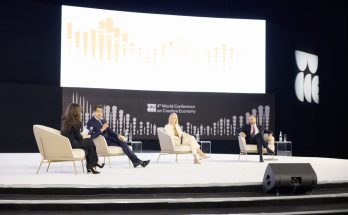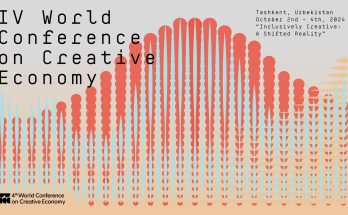There is a lot of hype regarding Prime Minister Modi’s innovative and constructive approach to India’s foreign policy. Some have gone so far as to say Indian foreign policy has undergone a revolution under the Modi administration. While it is contentious whether there are more elements of change or continuity, a change is certainly being implemented with regard to India’s soft power that is being methodically and strategically deployed like never before.
Joseph Nye originally coined the term “soft power” in the late 1980s, which he describes as “the ability to get what you want through attraction rather than coercion, resulting in a more favourable public opinion and credibility abroad”. It has been emphasized by author Shashi Tharoor, also a former junior minister of external affairs, who states that “the associations and attitudes conjured up in the global imagination by the mere mention of a country’s name is often a more accurate gauge of its soft power than a dispassionate analysis of its foreign policies”. The events of the previous decade have espoused the limitations of the use of force, leading to a subsequent resurgence in the importance of soft power as a foreign policy tool.
The concept of soft power is not new to India. India’s Non-alignment Movement (NAM) developed in the explicit historical situation of India’s independence struggle and was an embodiment of the values and ideals, such as the Gandhian nonviolent legacy, that influenced it. Independent India’s elites attempted to pursue a leadership role for India based on its ideological soft power and diplomacy. Indeed, India’s first Prime Minister Nehru was a proponent of soft power and carved an international role for India based on its moral standing and its support of the developing world, thus attempting to play a normative role in international relations.
“The essence of foreign policy is the use of the state’s resources – economic, diplomatic, propagandist – to induce such behavior on the part of other states as would promote its national interest.” Soft power is one such resource that India has plenty of – from its cultural and spiritual heritage, its cuisine that enjoys worldwide popularity and its influential and hugely successful diaspora to its IT industry to its democratic governance. Indian movies that are enjoyed by a large global audience not least Africans, Afghans and Arabs. India has long been a player in the phenomena of globalisation with its soft power reaching far and wide.
The immense goodwill and essentially positive image that Afghans have towards India is the byproduct of its soft power (and not its military might) that have rendered them more accepting of Indian forces training their security forces. As Shashi Tharoor espouses, “The attractiveness of these assets is that they permit countries to persuade others to adopt their agenda, rather than relying purely on the coercive ‘hard power’ of military force”. Another notable example is the international community’s exceptional treatment of India in the realm of nuclear trade based on its relatively benign international image (in addition to realist considerations).
While during the Nehruvian era, India’s soft power was a substitute for its lack of military power, India’s soft power clout is much stronger today, as it has acquired the hard power to back it up with. Yet India has been cagey in this pursuit and previous governments have not consciously harnessed the country’s soft power by following policies that augment the same to better achieve political ends. India’s soft power outreach has been largely unplanned and automatic, and institutions like the Indian Council for Cultural Relations (ICCR) that was started in the 1950s to publicise Indian culture worldwide have lacked adequate investment and resources.
From emphasising India’s democratic credentials during his visits to Bhutan, Nepal, Myanmar, Fiji, Australia and Japan to the official UN recognition of International Yoga Day and a vigorous engagement of the Indian diaspora in the United States, Australia and beyond, Prime Minister Modi is re-ushering the concept of soft power into the Indian foreign policy discourse.
India and China: Soft Power approach
The trust with which India is viewed internationally, more often as a stabilising and attractive force, and the lack of unease about India’s ascent is in stark contrast with the wariness associated with the rise of an expansionist and authoritarian China. India’s democratic principles, its vibrant civil society and its pluralistic and diverse nature have contributed to this. While China has invested greatly in the propagation of its soft power through various international programmes including its Confucius Institutes, these remain inconsistent with the domestic truths of an authoritarian society that lacks basic freedoms. In India’s case, the systematic dissemination of its cultural products is easier and more effective because that is what India fundamentally is and there is a lot that is naturally present.
Uses of Soft Power: Modi strategy
As Joseph Nye states, “In the information age, it is often the side which has the better story that wins”. To continue its generally positive story, India must tackle its domestic challenges. While the Modi government harnesses India’s natural strengths in the international arena, India’s soft power and international stature will gain its biggest boost if it is accompanied by important socio-economic changes that improve the security of women by countering its endemic rape problem, and the deliverance of inclusive domestic development that improves the quality of life of its millions that still live under dire poverty. The Modi government must be careful and preserve its soft power by ensuring that India maintains its traditions of tolerance and secularism that have led to successful accommodation of its diversity, and is not hijacked by the forces of polarisation. Soft power is akin to product branding – a brand will instantly conjure up images and associations, but these will only remain valid so far as the brand performs.
It is time that Indian statecraft consciously and strategically exploits its natural soft power advantages by tapping into its many such resources and tactically employing these as valuable instruments to further its foreign policy objectives in an increasingly globalising world. Under the Modi administration, a soft power strategy seems to be in the making. But equally important in sustaining this strategy are India’s home truths that must progress in tandem.
(Shairee Malhotra is a Mumbai-based analyst. She has an MA International Relations from Queen Mary University of London)
Author Profile
- India Writes Network (www.indiawrites.org) is an emerging think tank and a media-publishing company focused on international affairs & the India Story. Centre for Global India Insights is the research arm of India Writes Network. To subscribe to India and the World, write to editor@indiawrites.org. A venture of TGII Media Private Limited, a leading media, publishing and consultancy company, IWN has carved a niche for balanced and exhaustive reporting and analysis of international affairs. Eminent personalities, politicians, diplomats, authors, strategy gurus and news-makers have contributed to India Writes Network, as also “India and the World,” a magazine focused on global affairs.
Latest entries
 DiplomacyOctober 4, 2025UNGA Resolution 2758 Must Not Be Distorted, One-China Principle Brooks No Challenge
DiplomacyOctober 4, 2025UNGA Resolution 2758 Must Not Be Distorted, One-China Principle Brooks No Challenge India and the WorldJuly 26, 2025MPs, diplomats laud Operation Sindoor, call for national unity to combat Pakistan-sponsored terror
India and the WorldJuly 26, 2025MPs, diplomats laud Operation Sindoor, call for national unity to combat Pakistan-sponsored terror India and the WorldJuly 25, 2025When Fire Ends, Diplomacy Begins
India and the WorldJuly 25, 2025When Fire Ends, Diplomacy Begins India and the WorldJuly 16, 2025Operation Sindoor and its Aftermath: India’s Successful Diplomatic Outreach
India and the WorldJuly 16, 2025Operation Sindoor and its Aftermath: India’s Successful Diplomatic Outreach








